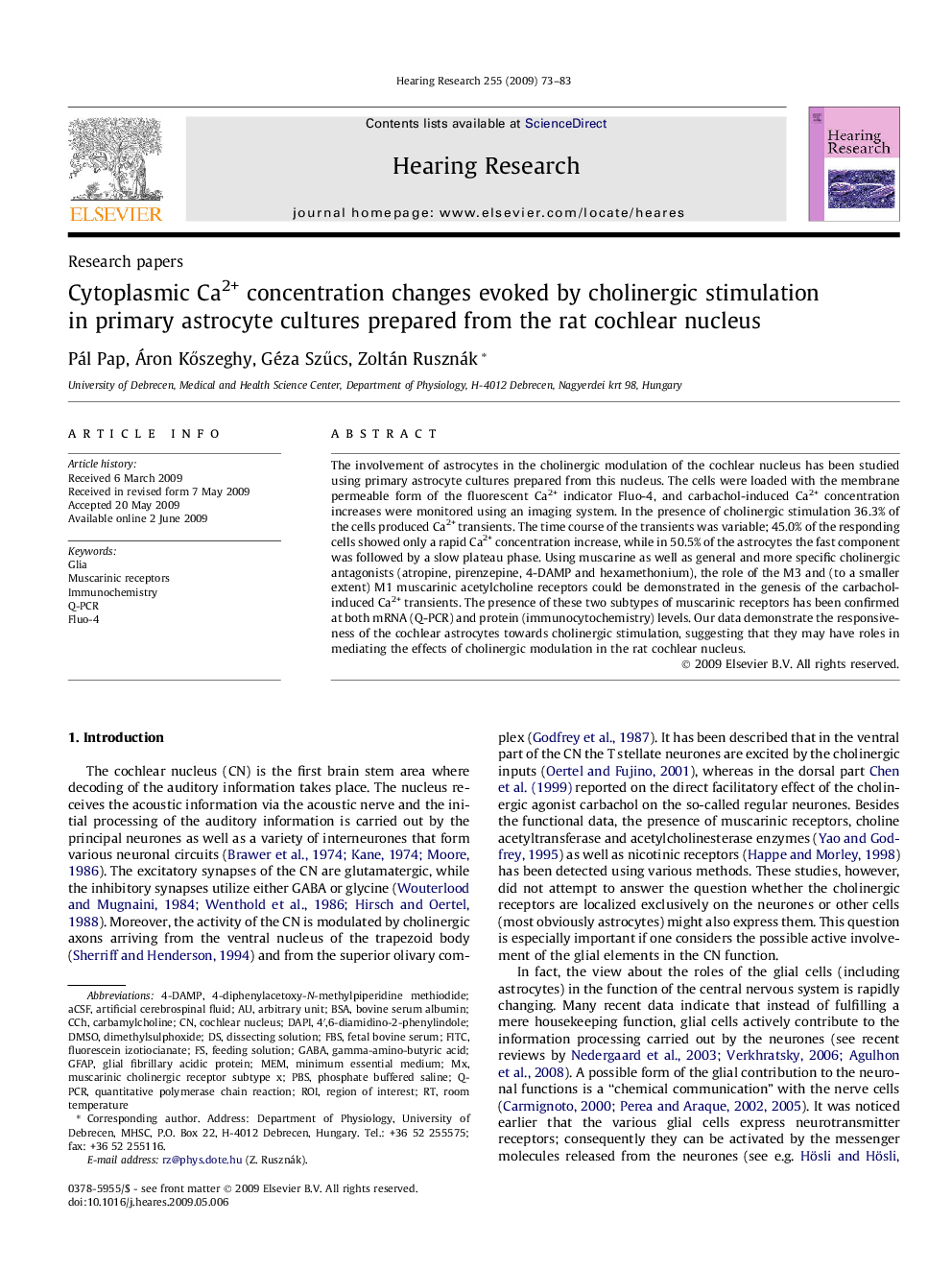| Article ID | Journal | Published Year | Pages | File Type |
|---|---|---|---|---|
| 4355866 | Hearing Research | 2009 | 11 Pages |
The involvement of astrocytes in the cholinergic modulation of the cochlear nucleus has been studied using primary astrocyte cultures prepared from this nucleus. The cells were loaded with the membrane permeable form of the fluorescent Ca2+ indicator Fluo-4, and carbachol-induced Ca2+ concentration increases were monitored using an imaging system. In the presence of cholinergic stimulation 36.3% of the cells produced Ca2+ transients. The time course of the transients was variable; 45.0% of the responding cells showed only a rapid Ca2+ concentration increase, while in 50.5% of the astrocytes the fast component was followed by a slow plateau phase. Using muscarine as well as general and more specific cholinergic antagonists (atropine, pirenzepine, 4-DAMP and hexamethonium), the role of the M3 and (to a smaller extent) M1 muscarinic acetylcholine receptors could be demonstrated in the genesis of the carbachol-induced Ca2+ transients. The presence of these two subtypes of muscarinic receptors has been confirmed at both mRNA (Q-PCR) and protein (immunocytochemistry) levels. Our data demonstrate the responsiveness of the cochlear astrocytes towards cholinergic stimulation, suggesting that they may have roles in mediating the effects of cholinergic modulation in the rat cochlear nucleus.
